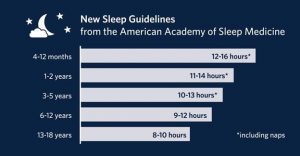Navigating Naptime: A Guide to Transitioning Naps for Growing Kids
Navigating Naptime: A Guide to Transitioning Naps for Growing Kids
by Susie Beghin, RECE, Founder of Alpha’s Discovery Kids
In the world of parenting and nurturing young minds, few subjects are as frequently discussed as sleep. Sleep isn’t just a routine part of life; it’s a cornerstone of a child’s well-being, influencing their physical health, emotional stability, cognitive development, and future success. As both a mother and an early childhood educator, I’ve seen firsthand the critical role that sleep plays in a child’s life. It’s not just a matter of rest; it’s a fundamental building block for their growth and happiness.
At Alpha’s Discovery Kids, we understand that there is no universal approach when it comes to sleep. Just as each child’s personality is unique, so are their sleep patterns. One of the common sleep-related issues we encounter in our daycare setting is the transition away from napping. As children mature, their needs and rhythms evolve, particularly when it comes to daytime naps. We recognize that naps are a vital component of early childhood, supporting their development and well-being. However, we’re also acutely aware that as children grow older, some may require shorter naps or even forego them altogether. This journey isn’t a one-size-fits-all experience; it’s a uniquely personal adventure for every child.
Phase Out Naps by Age: A Child-Led Approach
While there are general guidelines, it’s essential to remember that the transition from naps is a child-led process. As you can see from the chart below, sleep guidelines can vary with each age group, especially when it comes to children under 12 years old. At Alpha’s Discovery Kids, we understand the importance of an individualized approach to naps and sleep. Typically, as children grow and reach the age of around three years old, they may naturally begin to phase out naps. Signs that your child may be ready to move beyond regular napping include having shorter naps during the day, experiencing difficulty falling asleep for naps, or staying up very late in the evenings. Our educators observe these signs and adapt accordingly, ensuring your child gets the rest they need without pushing them into a set pattern.

Consistency Between Home and Daycare
For parents of young children who attend daycare, achieving consistency in nap schedules is a crucial goal. It’s important for parents and caregivers to familiarize themselves with the daycare’s nap routines. This way, they can begin to coordinate their child’s nap schedule with the one followed at daycare. For instance, if your child is in the process of transitioning to a single, longer nap in the afternoon, the key is to gradually shift their naptime to synchronize with the daycare’s routine. This gradual adjustment, typically 15 minutes per day or every few days, ensures children’s comfort and a smoother adaptation to the new schedule. This synchronization not only facilitates a seamless transition but also helps parents maintain sleep consistency during weekends and breaks.
Why Slowly Phasing Out Naps Matters
Transitioning from naps can be a sensitive process, and going slowly is crucial as rushing this transition can lead to an overtired (and cranky) child. The goal is to allow children to ease into their new nap schedule. This slow transition is vital because abruptly stopping naps can be overwhelming for a child. As parents and educators, we want to provide the child with a comfortable and gentle shift to ensure their well-being.

Cute little kid girl hugging teddy bear sleeping lay in cozy bed, happy small child embracing toy fall asleep on soft pillow white sheets covered with blanket having healthy night sleep, top view
Child-Led Napping at Alpha’s Discovery Kids
Our child-led approach involves closely observing your child’s nap patterns. If your child still benefits from naps, we will continue to provide them as needed, even up to four years old, and sometimes beyond. Some children, at three or four years of age, may still require a nap, while others might not. We let your child’s needs guide us, and if it’s evident that naps are necessary for your child’s health and well-being, we support them in this. It’s important to remember that there is no one-size-fits-all answer when it comes to napping. While most children may transition away from naps around three years old, some may continue to benefit from them for a more extended period.
The transition from naps is a significant milestone in a child’s development, and it’s essential to approach it with sensitivity and flexibility. At Alpha’s Discovery Kids, we aim to provide the right balance, ensuring your child is well-rested while allowing them to adjust to their individual needs. This approach allows for a more relaxed transition, whether your child requires a nap or not, while in our care.
By closely observing your child’s sleep patterns, synchronizing nap schedules, and respecting their unique needs, we ensure that nap time transitions are smooth and beneficial for both children and parents. Naps are an essential part of a child’s routine, and whether your child is ready to transition to a full day of wakefulness or still requires daytime rest, we are here to provide the support and flexibility they need.
For more information on early childhood topics, check out my YouTube channel.

